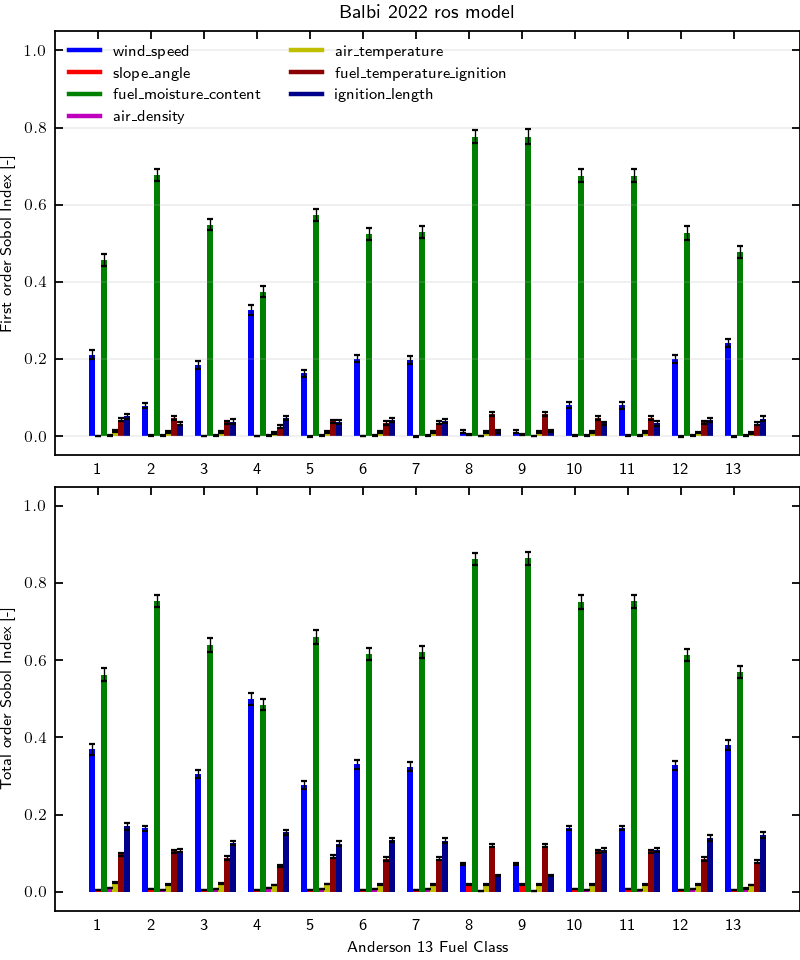Rate of spread model sensitivity to environmental inputs for Anderson 13 fuel model
Workflow information
- Documentation page:
- Version: 1.0
- Date of record creation: 2024-11-24
- Date of upload to firebench: 2024-11-24
- Version/tag/commit firebench: 0.3.0a1
Configuration
- Rate of spread model: Balbi 2022 using
firebench.ros_models.Balbi_2022_fixed_SFIREimplementation. - Number of point Sobol: 2^15
Specific inputs
The environmental variables chosen for this test are:
- Number of point Sobol: 32,768 = 2^15
- The environmental variables chosen for this test are:
Fig.1 shows first and total order Sobol indices for Balbi_2022_fixed_SFIRE rate of spread model for each class of the Anderson 13 fuel model. The fuel moisture (green) is clearly the most influencial parameter for each fuel category with 40 to 80% of the variance explained. The wind (blue) is the second most important parameter for each fuel category except 8 and 9 where it has negligible impact on the rate of spread. The slope (red), air density (magenta), and air temperature (yellow) have a marginal influence on the rate of spread. Using default values for these parameters is recommended. The ignition temperature (dark red) and the ignition length (dark blue) are of low importance.

Fig. 1 : Sensitivity analysis of Balbi 2022 rate of spread model for Anderson fuel model.
Data
- 01_generate_data.py:
cef2793330ffe09c9f580748098f8256b54b0f1f71302d1c1106de11c02472a8 - 02_plot_data.py:
741201c83734d3058b2f6039381608b1dbc457f60653f8481701cda29f6158ce - 03_create_record.py:
1517e71d68efa090e01952a3c7e483289d01d26bb8b8001abc55c50d02a17b10 - firebench.log:
7ed87a33c0e3639d04d836025f2ac21423906c8ca19a1c438bfe9eed705ce091 - output_data.h5:
67a2f4e5a3271d68445578eb3a53f9a99f2b48e3ca25a0eea8172eb979414176 - sobol_index.png:
4def0deff37d4b91b05fe4f2f1a2d339c3eea70771499bba96e5cf89e9ccf60d